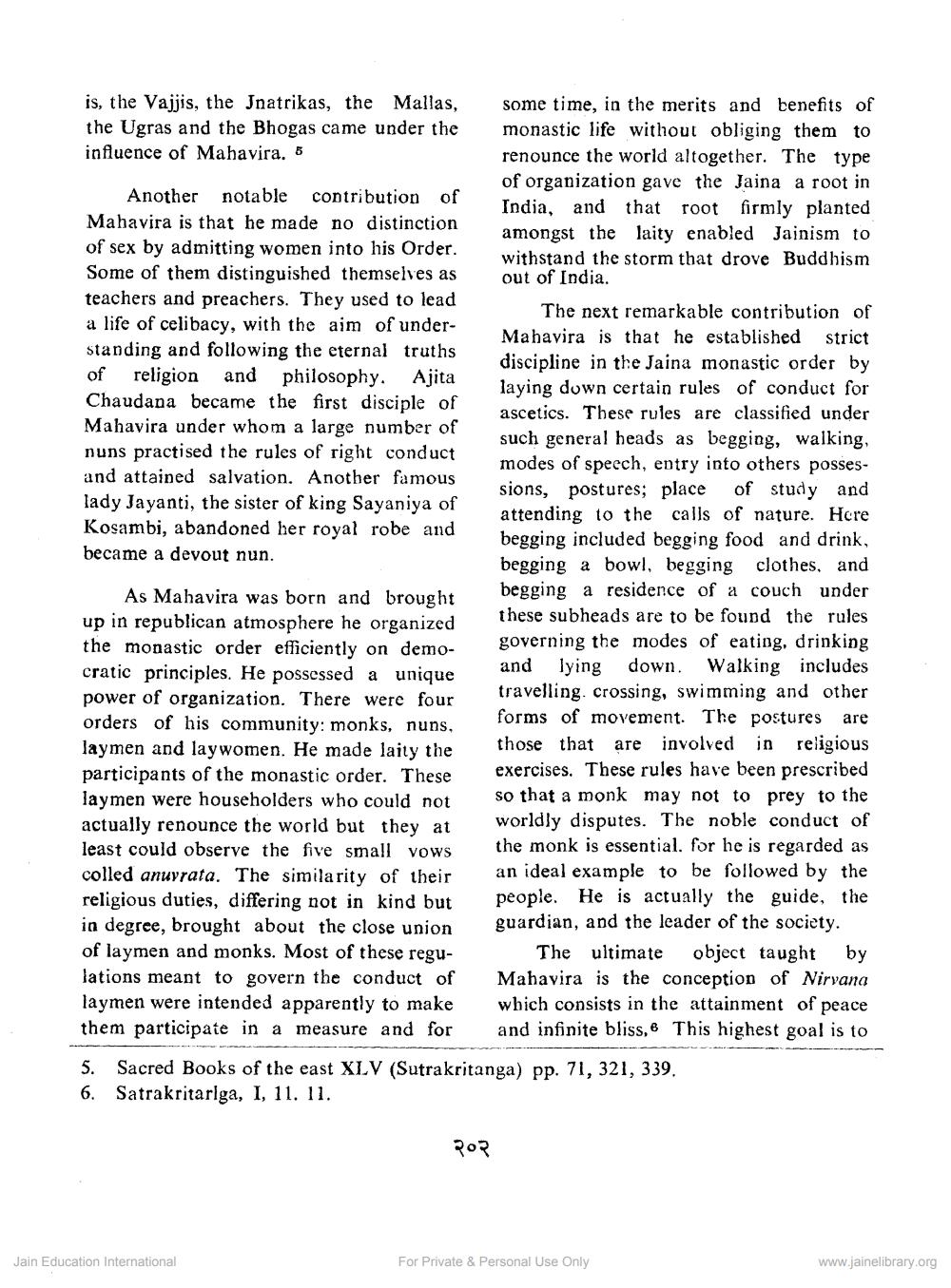Book Title: Contribution of Mahavir to Indian Culture Author(s): Kailashchandra Jain Publisher: Z_Tirthankar_Mahavir_Smruti_Granth_012001.pdf View full book textPage 3
________________ is, the Vajjis, the Jnatrikas, the Mallas, the Ugras and the Bhogas came under the influence of Mahavira. 5 Another notable contribution of Mahavira is that he made no distinction of sex by admitting women into his Order. Some of them distinguished themselves as teachers and preachers. They used to lead a life of celibacy, with the aim of understanding and following the eternal truths of religion and philosophy. Ajita Chaudana became the first disciple of Mahavira under whom a large number of nuns practised the rules of right conduct and attained salvation. Another famous lady Jayanti, the sister of king Sayaniya of Kosambi, abandoned her royal robe and became a devout nun. some time, in the merits and benefits of monastic life without obliging them to renounce the world altogether. The type of organization gave the Jaina a root in India, and that root firmly planted amongst the laity enabled Jainism to withstand the storm that drove Buddhism out of India. The next remarkable contribution of Mahavira is that he established strict discipline in the Jaina monastic order by laying down certain rules of conduct for ascetics. These rules are classified under such general heads as begging, walking, modes of speech, entry into others possessions, postures; place of study and attending to the calls of nature. Here begging included begging food and drink, begging a bowl, begging clothes, and begging a residence of a couch under these subheads are to be found the rules governing the modes of eating, drinking and lying down. Walking includes travelling. crossing, swimming and other forms of movement. The postures are those that are involved in religious exercises. These rules have been prescribed so that a monk may not to prey to the worldly disputes. The noble conduct of the monk is essential, for he is regarded as an ideal example to be followed by the people. He is actually the guide, the guardian, and the leader of the society. The ultimate object taught by Mahavira is the conception of Nirvana which consists in the attainment of peace and infinite bliss, 6 This highest goal is to As Mahavira was born and brought up in republican atmosphere he organized the monastic order efficiently on democratic principles. He possessed a unique power of organization. There were four orders of his community: monks, nuns, laymen and laywomen. He made laily the participants of the monastic order. These laymen were householders who could not actually renounce the world but they at least could observe the five small vows colled anuvrata. The similarity of their religious duties, differing not in kind but in degree, brought about the close union of laymen and monks. Most of these regulations meant to govern the conduct of laymen were intended apparently to make them participate in a measure and for 5. Sacred Books of the east XLV (Sutrakritanga) pp. 71, 321, 339. 6. Satrakritarlga, I, 11. 11. २०२ Jain Education International For Private & Personal Use Only www.jainelibrary.orgPage Navigation
1 2 3 4 5
